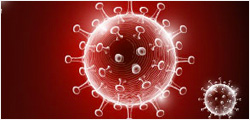It has been reported that filament forming surface proteins like hydrophobins are important virulence determinants in fungi and are secreted during pathogenesis. In obligate biotrophic pathogens like rust fungi, such proteins have not yet been identified. Rust transferred protein 1 (RTP1p), a rust protein that is transferred into the host cytoplasm, accumulates around the haustorial complex. To investigate RTP1p structure and function, we used immuno cytological, biochemical and computational approaches. We revealed that RTP1p accumulates in protuberances of the extrahaustorial matrix, a compartment that is surrounding the haustorium and separated from the plant cytoplasm by a modified host plasma membrane. Our... More
It has been reported that filament forming surface proteins like hydrophobins are important virulence determinants in fungi and are secreted during pathogenesis. In obligate biotrophic pathogens like rust fungi, such proteins have not yet been identified. Rust transferred protein 1 (RTP1p), a rust protein that is transferred into the host cytoplasm, accumulates around the haustorial complex. To investigate RTP1p structure and function, we used immuno cytological, biochemical and computational approaches. We revealed that RTP1p accumulates in protuberances of the extrahaustorial matrix, a compartment that is surrounding the haustorium and separated from the plant cytoplasm by a modified host plasma membrane. Our analyses reveal RTP1p being capable of forming filamentous structures in vitro and in vivo. We present evidence that filament formation is due to ß-aggregation similar to what is known from amyloid like proteins. Our findings reveal RTP1p being a member of a new class of structural effectors. We hypothesize that RTP1p is transferred into the host to stabilise the host cell and protect the haustorium from degradation in later stages of the interaction. We report first evidence for an amyloid like protein being transferred into the host cell giving high potential for new resistance mechanisms against rust fungi. This article is protected by copyright. All rights reserved.



































